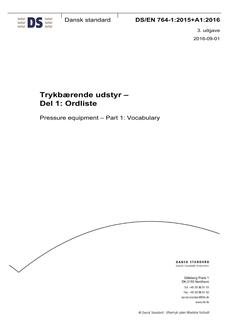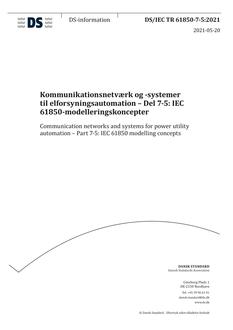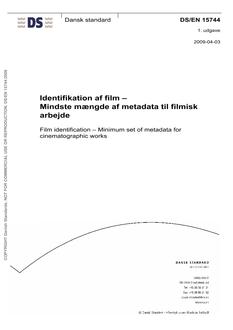-
-
Available Formats
- Availability
- Priced From ( in USD )
-
Available Formats
-
- Immediate download
- $51.00
- Add to Cart
-
- Printed Edition
- Ships in 1-2 business days
- $51.00
- Add to Cart
Customers Who Bought This Also Bought
-

DANSK DS/EN 764-1+A1
Priced From $78.00 -

DANSK DS/ISO 25119-4
Priced From $112.00 -

DANSK DS/IEC TR 61850-7-5
Priced From $78.00 -

DANSK DS/EN 15744
Priced From $44.00
About This Item
Full Description
This part of ISO 834 specifies the procedures to be followed for determining the fire resistance of nonload- bearing separating elements when exposed to heating on one face when the specimen size is such that a less than full scale fire resistance furnace is justified. This condition is particularly found in the testing of separating elements in transport applications since the end-use dimensions of the barrier products are often smaller than those specified in other parts of ISO 834. Specimen sizes requiring less than full size resistance furnaces are also found when testing elements to be fitted into a separating element, such as pipe penetration systems, ducts, dampers and cable transits. The test is not appropriate for the evaluation of curtain walls (non-load-bearing external walls suspended from the ends of floor slabs) or walls containing doors or glazing. Tests of walls containing doors are covered by ISO 3008; tests of walls containing glazing are covered by ISO 3009. The application of this test to other untested forms of construction is acceptable when the construction complies with the direct field of application as given in this part of ISO 834 or when it is subjected to a field of extended application analysis in accordance with ISO/TR 12470. NOTE Since ISO/TR 12470 gives only general guidelines, specific extended application analyses are to be performed only by experts in fire resistant constructions. Caution - Attention is drawn to the fact that fire testing may be hazardous and that there is a possibility that toxic and/or harmful smoke and gases may be evolved during the test. Mechanical and operational hazards may also arise during the construction of the test elements or structures, their testing and disposal of test residues. An assessment of all potential hazards and risks to health shall be made and safety precautions shall be identified and provided. Written safety instructions shall be issued. Appropriate training shall be given to relevant personnel. Laboratory personnel shall ensure that they follow written safety instructions at all times.





